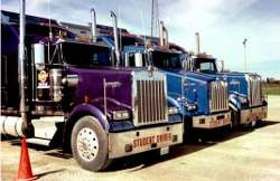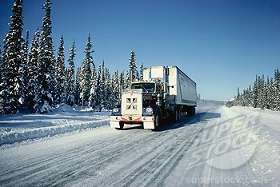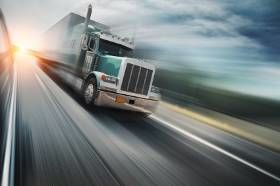Shifting
Topic 496 | Page 1

I felt the same way. Its really easier than you think it is. Im about to start my fourth week of school and Im shifting really well. We use a 10 speed. Its basic and easy to learn. You can google the shift pattern and that would help a little. A easy way to determine what gear u should be in is look at he MPH and add it up. So 35 equals 8th gear. Downshifting is a little tougher than shifting up the gears but just remember the MPH thing again. So your rollin at 45, which is 9th gear, so slow on down to 35 and clutch out, rev up the rpms and downshift to 8th gear. You have a hi/low range selector switch, make sure when your shifting from 5-6 and downshifting from 6-5 you make sure itd in the correct position. Down for gears 1-5. Up for gears 6-10. Dont know if this helps but you will learn it and be like this isnt so bad. Just timing a finesse. The clutch is somehing else you have to get used to, gettimg that left foot accustomed to doing something. Anyway, then you float gears one day, and you ask why eveb clutch it out. Easy as pie.
Float Gears:
An expression used to describe someone who is shifting gears without using the clutch at all. Drivers are taught to "Double Clutch" or press and release the clutch twice for each gear shift. If you're floating gears it means you're simply shifting without using the clutch at all.

You wont be at a disadvantsge and yes it will definately be taught in school. They actually prefer you not know how to drive a stick, well mine did. Say its easier to teach somebody that never has vice someone who has because you gotta break then of their 5 speed cars.

My school also prefers people that have never driven a stick because they dont have "bad" shifting habits. You will catch up fairly quickly to the double clutching. Atleast in Virginia, where I am getting my CDL , you havr to double clutch for your road test but once you get on the road you will be flowing the gears so you dont kill your knee.
Im not gonna lie, its gonna be challenging at first but after the second or third time driving the truck it will get alot easier.
Good luck
CDL:
Commercial Driver's License (CDL)
A CDL is required to drive any of the following vehicles:
- Any combination of vehicles with a gross combined weight rating (GCWR) of 26,001 or more pounds, providing the gross vehicle weight rating (GVWR) of the vehicle being towed is in excess of 10,000 pounds.
- Any single vehicle with a GVWR of 26,001 or more pounds, or any such vehicle towing another not in excess of 10,000 pounds.
- Any vehicle, regardless of size, designed to transport 16 or more persons, including the driver.
- Any vehicle required by federal regulations to be placarded while transporting hazardous materials.
Double Clutch:
To engage and then disengage the clutch twice for every gear change.
When double clutching you will push in the clutch, take the gearshift out of gear, release the clutch, press the clutch in again, shift the gearshift into the next gear, then release the clutch.
This is done on standard transmissions which do not have synchronizers in them, like those found in almost all Class A trucks.
Double Clutching:
To engage and then disengage the clutch twice for every gear change.
When double clutching you will push in the clutch, take the gearshift out of gear, release the clutch, press the clutch in again, shift the gearshift into the next gear, then release the clutch.
This is done on standard transmissions which do not have synchronizers in them, like those found in almost all Class A trucks.
OWI:
Operating While Intoxicated
Yap, the answers above are right on - you have nothing to worry about. The schools are designed to teach people everything right from the beginning. They don't assume you have any prior knowledge required to drive a rig.
Also, prior experience driving a manual in a 4-wheeler is of very little value when learning to drive a rig. They're two entirely different animals.

I felt the same way. Its really easier than you think it is. Im about to start my fourth week of school and Im shifting really well. We use a 10 speed. Its basic and easy to learn. You can google the shift pattern and that would help a little. A easy way to determine what gear u should be in is look at he MPH and add it up. So 35 equals 8th gear. Downshifting is a little tougher than shifting up the gears but just remember the MPH thing again. So your rollin at 45, which is 9th gear, so slow on down to 35 and clutch out, rev up the rpms and downshift to 8th gear. You have a hi/low range selector switch, make sure when your shifting from 5-6 and downshifting from 6-5 you make sure itd in the correct position. Down for gears 1-5. Up for gears 6-10. Dont know if this helps but you will learn it and be like this isnt so bad. Just timing a finesse. The clutch is somehing else you have to get used to, gettimg that left foot accustomed to doing something. Anyway, then you float gears one day, and you ask why eveb clutch it out. Easy as pie.
I am glad you are finding shifting easy for you and you are coming along well. Just remember that almost all trucks including those with the exact same setup will shift differently due to a number of things including how tight the transmission is or any other mechanical issue the truck has. The Cascadia has a wider "power band" then most due to the DD15 engine meaning where a lot of trucks will shift between 1000 to 1500 rpm to avoid lugging the truck I can shift 900 to 1600 rpm without lugging the truck.
With my truck I almost always start out in 4 gear even if I am loaded at 79000 lbs cause of the trucks setup and gear ratio. At 15 mph to 23mph I am in 6th gear.23 to about 30 i am in 7th. 30 to 34 is 8th gear and 35 to 45 is 9th and in the end I am in 10th gear from 45 to 62 mph.
I did not post this to prove you wrong but only to show that trucks are different and there is no guideline on RPM's or road speed to tell you when to shift the truck to the next gear.
Temperature, load weight and road grades are all different across the country and the biggest deciding factor of when you will be shifting the truck.
Float Gears:
An expression used to describe someone who is shifting gears without using the clutch at all. Drivers are taught to "Double Clutch" or press and release the clutch twice for each gear shift. If you're floating gears it means you're simply shifting without using the clutch at all.
HOS:
Hours Of Service
HOS refers to the logbook hours of service regulations.
I really wish we could drive loaded in school but I understand why we dont. But just to get the feel of starting in 2nd, we start off in 4th in class. I struggled with downshifting but Ive gotten it down, its fairly easy using the MPH. Man, riding up that high u see everything from a whole new view, especially ****ty drivers and rude ones. We have been honked at and cut off numerous times, and I know that big student driver tape makes them nervous, make a wide right with cars sitting there and watch them pucker up, hilarious.

Guys, I have a goofy noob question for you -- I see "floating gears" mentioned a lot around here. What does that mean? Just curious. :)
Floating Gears:
An expression used to describe someone who is shifting gears without using the clutch at all. Drivers are taught to "Double Clutch" or press and release the clutch twice for each gear shift. If you're floating gears it means you're simply shifting without using the clutch at all.

Guys, I have a goofy noob question for you -- I see "floating gears" mentioned a lot around here. What does that mean? Just curious. :)
It means shifting gears without using the clutch. Once you release the clutch when you start you do not use it again till you are ready to stop. You have to match the road speed and the transmission speed up at this point to it the truck in the correct gear. Its pretty simple to do and once you learn it will be the way you drive fromm now on once out of training.
Floating Gears:
An expression used to describe someone who is shifting gears without using the clutch at all. Drivers are taught to "Double Clutch" or press and release the clutch twice for each gear shift. If you're floating gears it means you're simply shifting without using the clutch at all.

My trainer showed me how to float in the last week we were together. I do it now about half the time, depending on load and conditions. I find it easier in the lower gears. One advantage to it, it gets you moving again from the stop sign or light, in about half the time as shifting. I found in the higher gears, sometimes, it does not want to come out of gear to float up, even at 1700. I dont force it, just use the clutch and shift. I also still use the clutch for downshifting most of the time.
Guy, we just were issued a bright shiny new 2013 Cascadia, and you are right about the range on it. In school, we had several older Columbias, and one International they had us using for road practice. At first, we all hated the International, because they originally taught us on the Columbias.Shifting it from 6th to 7th, seemed like there was a tiny notch to get it right. But once we started getting used to the International, we all loved it, because of the power, and the fact that 9th was so big on it's range for getting onto the freeway at speed. Seemed like 9th in that truck would handle 40 to 65.
One truism I have learned about shifting, (and lord knows, I am no expert, only being on the road 2 months), is some days, I never miss a gear, down shift perfectly, never even a little grind. Some days, I miss a gear, or it does not want to behave. Worst is, sometimes when I have been using the engine break, and forget to turn it off. I cant run through the lower gears without grinding them. It slows down the engine too fast. But also after doing that a few times, I check the jake to make sure it is off. I also sometimes have trouble on inclines with a very heavy load. Have to learn to take it a bit higher in RPMs to shift right.
New Reply:
New! Check out our help videos for a better understanding of our forum features

















Preview:
This topic has the following tags:
Choosing A Truck Driving School Tips For Shifting







 TT On Facebook
TT On Facebook
Howdy again!
I've never had the opportunity to drive a manual before. Is this going to be a major disadvantage when I start off at school? Or is it something that will be taught at CDL School?
Thanks, James
CDL:
Commercial Driver's License (CDL)
A CDL is required to drive any of the following vehicles: